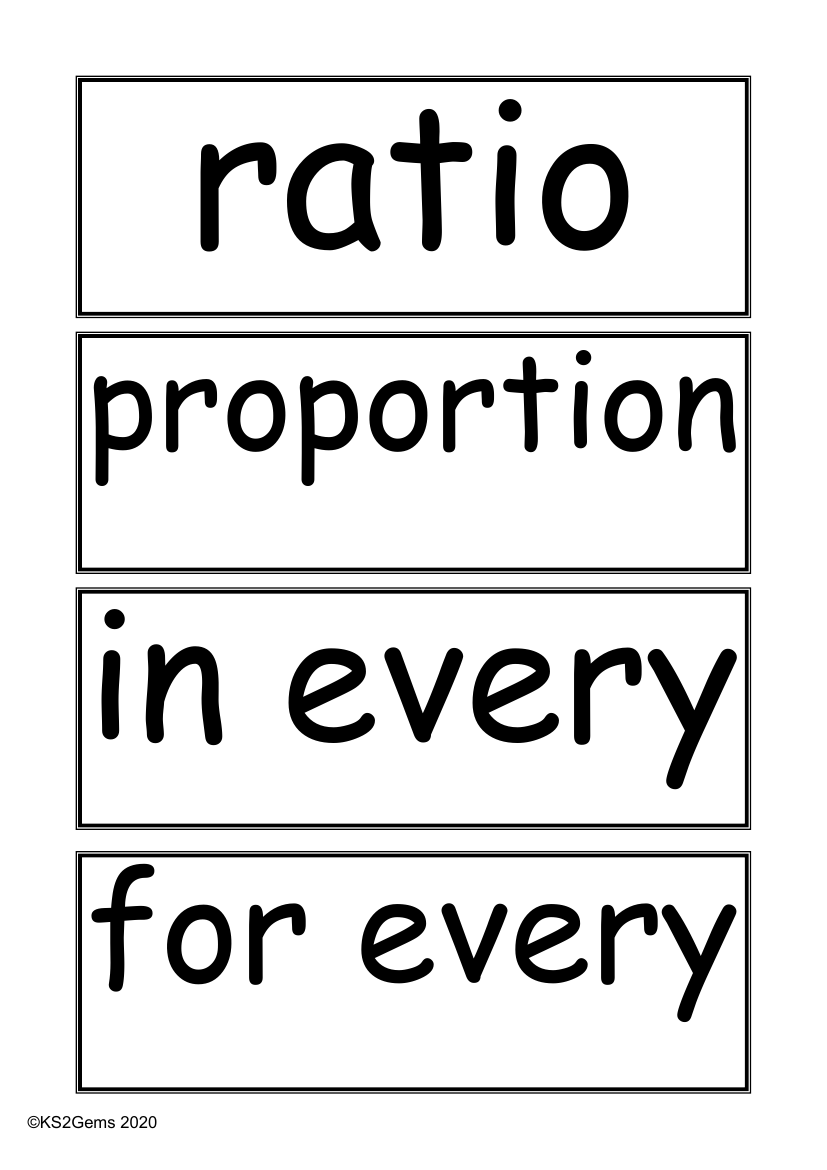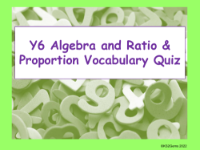Vocabulary - Ratio and Proportion

Maths Resource Description
In the context of mathematics, particularly when discussing ratio and proportion, the terms 'ratio' and 'proportion' are fundamental concepts. A ratio is a way to compare two quantities, showing how much of one thing there is compared to another. It is often expressed using the notation 'a:b', which indicates the relationship between two quantities, 'a' and 'b'. For example, in a ratio of 1:2, for every one unit of 'a', there are two units of 'b'. Ratios are used to describe the relative sizes of two or more values, and they do not necessarily have to be equal or similar quantities.
Proportion, on the other hand, refers to the equality of two ratios. It is a statement that two ratios are equivalent. When we say that two quantities are in proportion, it means that the relationship between the first set of quantities is the same as the relationship between the second set. The term 'scale factor' is associated with proportion and is used to describe the factor by which a quantity is scaled up or down in proportion to another quantity. Unlike ratios, which can represent unequal quantities, proportions always represent an equivalence. In mathematics, proportions can be represented using fractions, which are another way to express the relationship between parts of a whole or between two different quantities.


